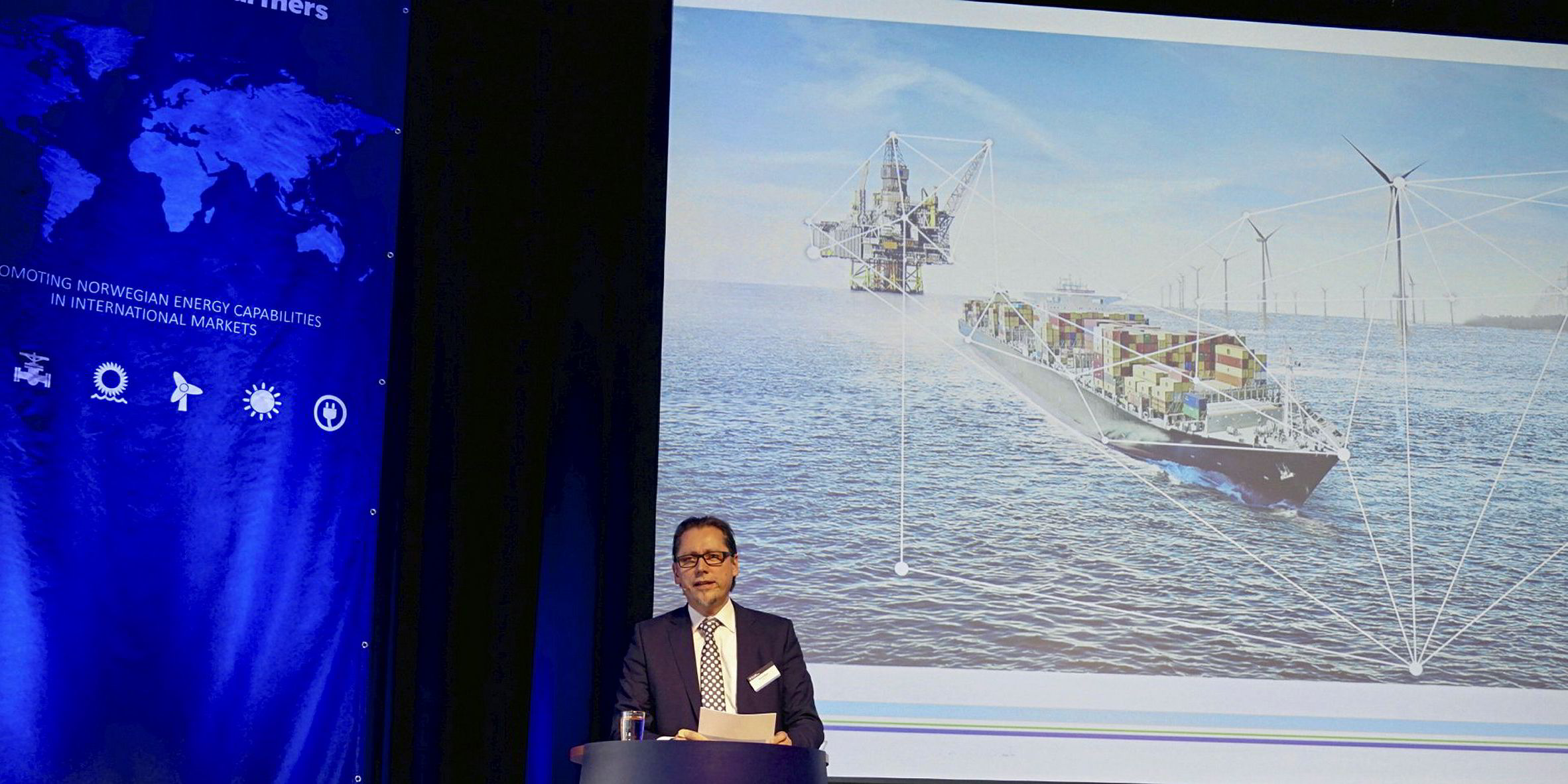DNV GL has drawn a green map of the world’s future energy use that predicts a huge decline in fossil fuels.
It forecasts that fossil fuels’ role in energy production will decline from 80% today to 50% by 2050.
A key driver of the changes will be the increased use of green energy, with the classification society predicting that half of new cars sold by 2050 will be electric.
However, DNV GL chief executive Remi Eriksen rejects the suggestion that a reduction in energy consumption will result in a long-term decline in the seaborne transport of energy. He told TradeWinds: “The future global energy profile is very important for shipping and we will be bringing a report out on that for the Marintec exhibition in China [in December].
“But we are still expecting energy transportation to grow. After all, we are predicting a 130% rise in global GDP over the period [to 2050].”
But Eriksen adds that the traditional direct correlation between the seaborne energy trade and GDP growth will change.
“We believe the energy transportation will become decoupled from GDP growth,” he said.
“And we are not saying every sector will do well. There will be differences for shortsea operators and deepsea, and the outcomes will be different for oil products carriers, gas carriers and containership operators.”

Eriksen says energy generation and use will become more efficient and cheaper. As a result, global demand will plateau after 2030 as renewables are used more widely in the international drive to limit global warming.
Today, energy accounts for 5% of world Gross Domestic Product (GDP); by 2050, it will be 3%, DNV GL forecasts.
According to the report, one person on average used 135 gigajoules of energy per year in 2015, but by 2050, that could fall to 26 gigajoules.
Eriksen says global energy use will go into decline despite population increases and economic growth because of efficiency gains.
“Energy efficiency will grow at a faster rate than GDP,” he said. “We predict GDP will increase by 130% by 2050 but that energy efficiency will increase by 140%.”
However, in a panel discussion on the report in London, exports have suggested that the DNV GL forecast is a little too optimistic on renewables.
A former Shell chairman, Lord Ernest Oxburgh, believes the class society has not taken enough account of the role of nuclear power and carbon capture in the future energy profile.
John Knight, executive vice-president of strategy at Statoil, says it is difficult to produce a reliable forecast of the energy profile and urges stakeholders to be flexible.



